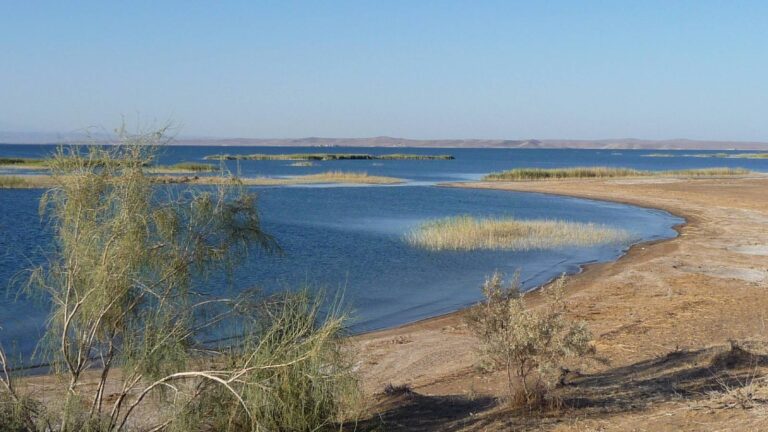Getting There
The closest train station to Nurata is in Navoi. From there you can take a taxi to Nurata, or more cheaply get a local bus to Karmana, and then change at the bus station for Nurata.
What to Expect
It is a steep climb from Nurata Chashma to Nurota Fortress, but well worth the effort for the views. You can still see enough of the mud brick walls to appreciate the original layout.
History
Nur Fortress is said to have been built by Alexander the Great in the 4th century BC, which makes it one of the most ancient monuments in Uzbekistan. It was an important location for defending Marakanda (which today is known as Samarkand) against nomadic raiders from the north. The name, Nur, means “light”, and it was on the main caravan route from Samarkand to Bukhara.
The fortress’ Shahristan (inner town) would have covered an area of about 500 x 500 m and was protected by a high wall and towers. There was just a single gate to enter, and its raised position on the hilltop would have been advantageous, too. Genghis Khan and the Mongols are said to have attacked under the cover of darkness in 1220. The residents mistook them for a Silk Road caravan and opened the gate.










